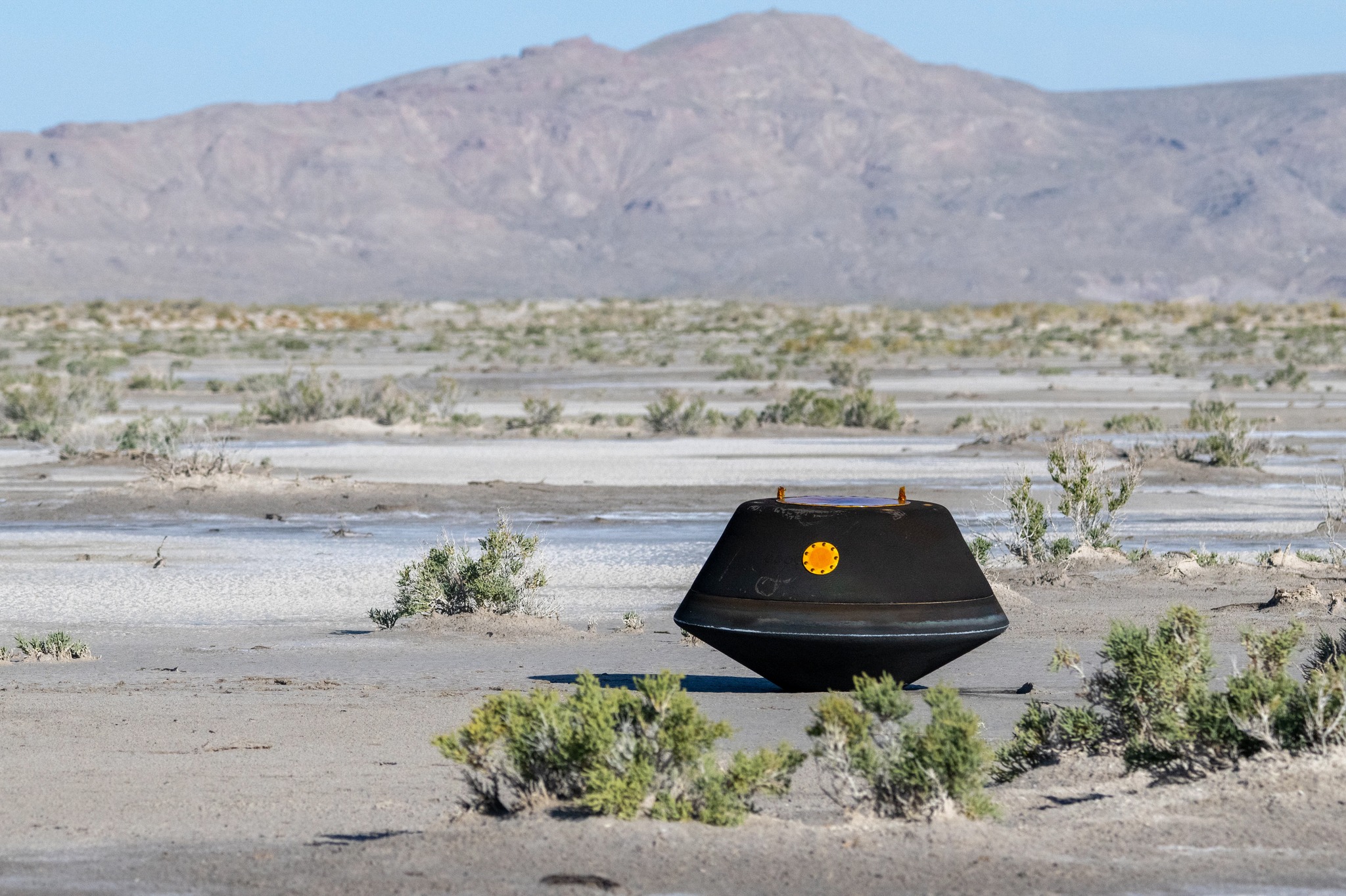Bengaluru, NFAPost: After a seven-year odyssey through space, the NASA capsule bearing the largest-ever cache of asteroid samples gracefully touched down in the Utah desert, heralding a watershed moment for planetary science. The celestial bounty promises to unravel the enigmatic beginnings of our solar system and shed light on Earth’s evolution into a hospitable abode.
In a feat of interplanetary finesse, the Osiris-Rex probe, launched in 2016, made its rendezvous with the asteroid Bennu, securing approximately nine ounces (250 grams) of precious dust from its rugged terrain. NASA asserts that even this modest quantity will provide invaluable insights into the nature of asteroids that might pose a threat to our planet, as well as illuminate the earliest chronicles of our solar system. According to NASA Administrator Bill Nelson, this historic harvest rivals the magnitude of the Apollo moon rock missions.
The safeguarding of this celestial trove commenced as the tire-sized capsule made its earthly contact, promptly ensconced by a team donned in protective gear. Swiftly hoisted by helicopter to a nearby temporary “clean room,” meticulous measures were taken to forestall any potential mingling with terrestrial sands, ensuring untainted analyses. Subsequently, the sample embarked on an aerial voyage to NASA’s Johnson Space Center in Houston, Texas, where it will undergo a painstaking, days-long process of scrutiny. Preliminary findings are slated to be unveiled at a press conference on October 11.
In the spirit of international cooperation, a significant portion of the sample will be preserved for future generations’ scientific inquiry. Roughly a quarter will be promptly employed in experiments, with a fraction dispatched to esteemed partners in Japan and Canada, stalwarts in this interstellar endeavour. Japan, in a prior alliance, contributed a minute fraction from the asteroid Ryugu in 2020 during the Hayabusa-2 mission. A decade prior, it made history with a minuscule sample from a different asteroid. However, the Bennu bounty dwarfs its predecessors, affording an expansive scope for rigorous examination.
Asteroids, venerable relics of the solar system’s primordial era, encapsulate its original constituents, dating back a staggering 4.5 billion years. Remarkably preserved, they serve as time capsules, proffering clues to the system’s genesis and transformation. As Melissa Morris, the program executive for Osiris-Rex, aptly notes, “It’s our own origin story.” The hypothesis that asteroids and comets played a vital role in seeding Earth with organic material and potentially water, thereby nurturing life, is a captivating prospect.
Bennu, a colossal 1,640-foot diameter behemoth, is believed to be replete with carbon—the elemental building block of life on Earth—and harbours water molecules ensconced within its mineral embrace. The probe’s unforeseen plunge into the asteroid’s surface in 2020, akin to a child’s ball pit, unveiled a surprisingly low density. Deciphering its elemental composition holds promise for a distant but transformative future.
The Osiris-Rex mission’s triumphant denouement in Utah stands as a testament to human ingenuity and collective scientific endeavour. The precious cargo it brings holds the potential to rewrite chapters in our understanding of the cosmos and, in doing so, illuminates our own terrestrial genesis.





